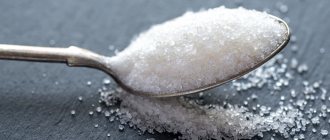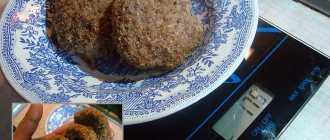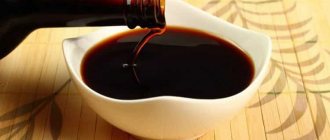Despite its high calorie content, herring contains a lot of protein and a lot of useful elements. Find out which herring is best for you if you're on a diet, and get 8 recipes with calorie content.
Author: Kristina Lobanovskaya, doctor, practicing nutritionist Article updated: 11/09/2020
Herring is one of the most common varieties of fish consumed by humans. Initially, it was prepared only by salting and, due to its great popularity, even became a household name for any salted fish. Today, cooking options have expanded significantly - it is boiled, fried, stewed, baked and pickled, used fresh or frozen. The calorie content of herring also depends on the cooking method. The lowest energy value is found when canned in its juice, pickled, boiled and fried (from 160 to 185 kcal/100 g). The average calorie content is smoked (about 220 kcal), and the highest is salted (up to 260 kcal) and canned in oil (up to 300 kcal). It should be borne in mind that the given indicators are averaged and may vary depending on the age and size of the carcass, as well as the place and period of catch.
Salty
The average calorie content of salted, lightly salted, lightly salted and fresh herring ranges from 160 to 260 kcal per 100 grams. The fatter and larger it is, the higher its energy value. In general, any fatty fish provides the body with at least 2 times more energy than white fish. The modern food industry offers a wide range of salted herring - whole, sliced or filleted, with seasonings, herbs, onions and other flavorings. It is sold by weight or in plastic packages of various sizes. When purchasing such a product, you need to pay attention to the expiration date.
It is extremely rare today to find traditional tin cans with large, tasty and the healthiest herring, made with a minimum of preservatives and without chemical additives. If possible, it is recommended to buy exactly this product, carefully studying the date of manufacture and inspecting the jar to make sure there is no damage or swelling. When purchasing barrel salted herring at the market, you should choose large fish with silver skin without a yellow or rusty tint. The carcass should be elastic and, at the point of pressure, quickly return to its original shape.
Smoked
This type of heat treatment, such as smoking, has been used for a long time. It gives the product a special taste and new aroma, improves its consumer characteristics, and extends its shelf life. The calorie content of herring prepared by smoking is 170−220 kcal/100 g. This is the average calorie content for such fish products, but it is not recommended to consume it in large quantities.
If the benefits of herring in salted, pickled or any other form are undeniable, then the benefits of smoked herring under industrial conditions are questionable. This is due to the fact that during the production process it is subjected to various influences, as a result of which the chemical composition changes and the content of useful substances decreases. And in some cases, it is the consumption of smoked herring that can be harmful to health, since when smoked, toxic compounds and carcinogens are formed in it, which increases the risk of developing cancer.
Canned
Among the many canned fish, one of the healthiest and most popular is herring, canned in its own juice without oil. The calorie content of herring with this method of preparation is low and usually varies from 90 to 140 kcal/100 g. At the same time, it has almost all the beneficial properties of fresh fish and has almost no contraindications for consumption, except for the presence of allergic reactions to fish products or seafood.
There is an opinion that such a long and significant heat treatment as canning kills everything valuable in fish. But this is far from true. Many minerals and vitamins, as well as Omega-3 fatty acids, are preserved in it. At the same time, the calorie content is somewhat reduced, and the bones become soft and are eaten together with meat, which makes canned food even healthier than fish freshly prepared in any way. Moreover, they are very tasty, very affordable and can be consumed either separately or added to soups, salads, snacks and pies without increasing their calorie content.
Other canned food - “Herring in vegetable oil”, on the contrary, have a fairly high calorie content, but are famous for their excellent taste and are considered one of the best sources of Omega-3 fatty acids, vitamins A, D, E and B12. In addition, such canned food contains easily digestible microelements that ensure the normal functioning of the body, promote the restoration of damaged tissues and accelerate metabolic processes. You can use such canned food as an independent dish or as a component in more complex recipes (fish salads, soups, pie filling).
The average calorie content of herring in oil is about 300 kcal/100 g, which makes it a useful product for people suffering from weight loss, but not always suitable for those on a diet. However, it is recommended to be used in everyday nutrition with an active lifestyle as a source of easily digestible and highly valuable animal protein, fatty acids and the above vitamins and minerals. You should not consume such canned food if you have allergic reactions, excess body weight or gastrointestinal diseases.
“Herring in tomato sauce” is another type of canned fish snack, but made with the addition of tomato paste and spices. They also contain vegetable oil, which increases the calorie content and nutritional value of the product, and spices and tomato make its taste more aromatic and appetizing.
Canned food with tomato sauce has the same beneficial properties as the herring described above in oil filling or in its own juice. But their calorie content in this case will be average between the other two types of products indicated - only 159 kcal/100 g. The manufacturer recommends using the product separately or with a side dish, and also adding it to salads and soups. Regular introduction of such canned food into the diet helps reduce the risk of atherosclerosis and cardiovascular pathologies. They should be included in the menu with caution and in small quantities in case of high blood pressure and renal failure.
Harm to herring
Do not forget that herring contains a lot of salt. High blood pressure, a tendency to swelling, and kidney disease are cases when you should not eat this fish. A large amount of salt also has an adverse effect on the body of healthy people. It is imperative to ensure a sufficient level of fluid in the body.
| Product | Kcal | Proteins, g | Fats, g | Angle, g | |
| Pacific fatty herring, cold smoked | 225 | 20,3 | 16 | ||
| Herring, Pacific, lightly salted | 88 | 17,5 | 2 | ||
| Herring, Caspian (Dolgan), medium | 88 | 17,5 | 2 | ||
| Herring, Caspian (Dolgan), large | 88 | 17,5 | 2 | ||
| Herring, Caspian (Dolgan) | 88 | 17,5 | 2 | ||
| Herring, Caspian (Volga), medium | 88 | 17,5 | 2 | ||
| Herring, Caspian (Volga), large | 88 | 17,5 | 2 | ||
| Herring, Caspian (Volga) | 88 | 17,5 | 2 | ||
| Herring, Azov-Black Sea | 88 | 17,5 | 2 | ||
| Pacific herring, medium salted | 224 | 17,4 | 17,1 | ||
| Atlantic herring, medium salted | 145 | 17 | 8,5 | ||
| Pacific herring low-fat | 135 | 18 | 7 | ||
| Fatty Pacific herring | 191 | 14 | 15 | ||
| Pacific herring | 191 | 14 | 15 | ||
| Iwasi herring, small | 182,3 | 20,5 | 11,1 | ||
| Iwasi herring, large | 182,3 | 20,5 | 11,1 | ||
| Iwasi herring | 182,3 | 20,5 | 11,1 | ||
| Atlantic herring low-fat | 135 | 19,1 | 6,5 | ||
| Atlantic fatty herring | 248 | 17,7 | 19,5 | ||
| Atlantic herring | 246,3 | 17,7 | 19,5 | ||
| Pacific herring, raw | 195 | 16,39 | 13,88 | ||
| Pacific herring, cooked in the heat | 250 | 21,01 | 17,79 | ||
| Atlantic herring, raw | 158 | 17,96 | 9,04 | ||
| Atlantic herring, cooked in the heat | 203 | 23,03 | 11,59 | ||
| Atlantic herring, pickled | 262 | 14,19 | 18 | 9,64 | |
| Atlantic herring, smoked | 217 | 24,58 | 12,37 | ||
| Smoked herring | 217 | 24,58 | 12,37 | 0 | |
| Herring fish | 88 | 17,5 | 2 | 0 | |
| Canned herring | 88 | 17,5 | 2 | 0 | |
| Salted herring | 88 | 17,5 | 2 | 0 | |
| Herring | 217 | 24,58 | 12,37 | 0 | |
| Pickled Herring | 262 | 14,19 | 18 | 9,64 |
Dishes
The strong association between herring and pickling is often confusing, which is why recipes made from this fish are not trustworthy. However, the use of fresh herring is very widespread in cooking. It can be prepared in almost all known ways, including home smoking and pickling. However, when choosing a cooking option, you need to take into account that each of them in a certain way affects the final calorie content of the dish, reducing or increasing it. In any case, before cooking, the fish carcass is cleaned, washed, the head is cut off and the entrails are removed. Then, depending on the recipe, simply cut into transverse pieces or fillet. To separate the meat from the spine and bones, first make an incision along the back, then, starting from the tail, grab the ridge with your fingers on both sides and remove the fillet parts.
Boiled
Boiled herring contains the maximum amount of protein - 23 g per 100 g of product, which is a third of the daily protein requirement, and only 16 g of fat (22%, respectively).
Important! For those who are on a weight loss diet, of all the cooking options, boiled herring is most suitable, the calorie content of which on average does not exceed 162 kcal per 100 grams. This indicator is practically the lowest compared to other herring dishes, and besides, cooking is considered one of the most useful methods of cooking for the diet.
To obtain boiled herring, you can use 2 recipes. The first - “Seven Minute” - involves regular cooking in water, in the second, the fish pieces are first placed in a bag.
"Seven Minutes"
The prepared carcass is cut into 5-6 portioned pieces, placed in a pan, filled with water, pepper, bay leaf and salt are added. In this case, it is recommended to take 5 tbsp. l. per 1 liter of water - the herring “will not take” too much, but it will not boil over. Bring to a boil and cook for exactly 7 minutes over low heat. Serve with a side dish, best of all with mashed potatoes.
In the package
Place herring cut into large pieces into a regular but fairly thick plastic bag, add pepper, spices and salt to taste. After this, press the bag against the contents, squeezing the air out of it, and tie it tightly. Dip into boiling water and cook for 10–15 minutes after boiling (for 2–3 carcasses it will take a little longer - about 20–30 minutes). Take out the bag, carefully cut off the top and lay out the finished pieces, pouring over the juice that has collected in the bag. Fish prepared in this way tastes like canned fish in its juice.
Fried
The phrase “fried herring” is often associated with an unpleasant odor. But in fact, it smells no worse than any other fish, and a similar myth arose back in Soviet times, when Vietnamese students living in dormitories fried salted herring in shared kitchens. She did have a rather disgusting smell. But fresh or frozen herring smells great when fried. In addition, the calorie content of fried herring is slightly lower than salted or baked herring, averaging 185 calories per 100 grams. This is due to the fact that during the frying process, the subcutaneous fat melts and some of it remains in the pan.
To prepare, the carcass cut into pieces is poured with soy sauce, pre-mixed with chopped garlic, salt and spices. For 4 carcasses, 5 tbsp will be enough. l. sauce and 3 cloves of garlic, the rest to taste. Leave for a few minutes to marinate, and then roll each piece in flour and place in a hot frying pan with heated vegetable oil. Fry on all sides until golden brown. Served with potatoes, a slice of lemon and herbs.
Baked
To bake fish, use foil and an oven or steamer. The calorie content of herring baked in the oven or steamed increases to 244 calories per 100 g. This results in a tasty and very nutritious, but very healthy dietary dish.
To prepare the fish, the head is not cut off during the cleaning process, but only the gills and eyes are removed. You can remove the skin if you wish, but this is not necessary. After thorough washing under running water, the carcass is dried with a napkin, then rubbed with a mixture of spices (ground coriander seeds, black pepper and dried or chopped fresh garlic) with lemon juice. You can add a little salt.
After processing, the carcass is wrapped in foil (if there are several of them, then each one separately). Place on a baking sheet, place in an oven preheated to 180º C, and bake for 30–50 minutes, depending on oven settings. When using a double boiler, the actions will be similar,
and the cooking time is determined in accordance with the instructions. Prepared fish is served with herbs and fresh vegetables, consumed both hot and cold.
Stewed
When stewing, the calorie content of herring is reduced by adding vegetables and water. Therefore, the energy value of such a dish is 121 kcal per 100 g or 1854 kcal for the entire serving. You can reduce these indicators by removing vegetable oil from the recipe. Then the calorie content of the finished product will be 92 kcal and 1404 kcal, respectively.
To prepare 800 g of herring, take 150 g of grated carrots and onion cut into half rings, place in a saucepan with a thick bottom, season with seasonings, pour in 350 ml of water and 50 g of vegetable oil (if desired). Bring to a boil, simmer for 20–30 minutes over low heat. Consume after cooling.
Pickled
To marinate herring, a specially prepared marinade is used, in which it is soaked for a certain time. The calorie content of herring after pickling is 192 kcal/100 g.
The marinade is boiled by adding 2 tbsp per 1 liter of water. l. spoons of sugar and salt, bay leaf and pepper to taste. The mixture is boiled for several minutes, allowed to cool completely and pour in 4 tbsp. l. vinegar. This amount of brine is enough to marinate 1 kg of prepared fish. If you need to marinate 2 kg, then you will need 2 liters of marinade.
The prepared raw materials are placed in a container and poured with cold marinade so that it covers it completely. If necessary, press down on top with a small weight, for example, a plate. Leave for a day at room temperature, after which it is kept in the refrigerator for another 2 days. The finished dish is served with pickled onions and butter filling.
Smoked
The calorie content of hot-smoked herring is on average 220 kcal/100 g. You can smoke it yourself if there is a specially equipped place for this or a regular grill.
To prepare herring for smoking, it is not gutted, but only cleaned and washed thoroughly. Then rub with salt and spices and leave for 2–4 hours (can be overnight). Before smoking, wipe off any remaining salt and spices with a napkin. Place on the grate of a smokehouse or grill and leave for 30 minutes. During this period, carefully monitor the flame so that the carcass does not burn, but only smokes. It is recommended to cool the dish before serving.
With onion
Salted herring is used in combination with various products and is included in many recipes. But the simplest and most popular dish is its combination with onions and vinegar-oil dressing. The calorie content of herring in this case can range from 190 to 270 kcal/100 g. But it should be borne in mind that without oil the energy value of the dish will be 20–50 calories lower.
The basis of the recipe is pieces of herring and onion cut into half rings, and you can use different compositions for dressing. The classic combination is oil and vinegar in a 3:1 ratio. In addition, you can add soy sauce and mustard to these ingredients to taste.
Calorie content of oven-cooked herring
Herring baked in the oven has an average calorie content of about 200 kcal, of which 19 g of protein, 13 g of fat and 1-2 g of carbohydrates. When grilling fish, the nutritional value may vary depending on the additional ingredients used. There will be fewer calories if you bake the herring in foil with spices and lemon, but for taste you can add onions, carrots, or use a marinade based on vegetable oil or even mayonnaise. In this case, the calorie content will rise to 220-230 per 100 g, which is also not that much.
The nutritional value
Herring is easily digestible by the body and supplies it with a large amount of high-quality protein, as well as valuable Omega-3 fatty acids, vitamins, minerals and other beneficial substances necessary for humans. Thanks to its composition, the product has a positive effect on health, helps normalize metabolism, and reduces the risk of cardiovascular diseases. Even the relatively high calorie content of herring is made up of exclusively healthy calories contained in fish oil. But salted herring should be consumed in reasonable quantities, since excessive salt intake from food creates thirst and stimulates appetite, and can also lead to exacerbation of kidney diseases, edema and excess weight gain.
Proteins fats carbohydrates
Herring is considered the most useful product not only in terms of calorie content, but also in terms of the amount of dietary fat. 100 g of this sea fish contains on average:
- proteins - 17.5 g;
- fat - 15.9 g;
- carbohydrates - 0.5 g.
At the same time, the protein present in herring is high-quality and easily digestible, and the essential amino acids in which it is rich ensure rapid regeneration and construction of new cells, primarily muscle tissue. Another macronutrient - herring internal fat - mainly due to the Omega-3 fatty acids it contains, is much more effective and healthier than animal fats and many vegetable oils. It helps reduce cholesterol levels in the blood, prevents heart and vascular diseases, reduces the likelihood of blood clots, and accelerates blood flow in the capillaries.
Macro- and microelements
Herring contains a very impressive list of minerals, macro- and microelements. It contains the following in greatest quantities:
- magnesium - calms the central and peripheral nervous system, participates in the synthesis of fatty acids and proteins, as well as in over 300 enzymatic reactions;
- potassium - effectively removes excess water, quickly eliminates swelling, ensures the vital activity of all soft tissues, improves the conduction of nerve impulses;
- calcium - strengthens bone and muscle tissue, improves oxygen supply to cells;
- selenium – protects cells from the harmful effects of free radicals, promotes proper functioning of the thyroid gland;
- zinc – supports the immune system, helps actively renew skin cells;
- phosphorus - strengthens the body, participates in all vital internal processes, maintains healthy and strong bones;
- iron – helps provide oxygen to tissues, improves blood formula;
- sulfur – actively helps fight pathogenic bacteria, relieves inflammation, protects blood protoplasm, slows down the aging process;
- sodium - regulates water balance, normalizes heart rhythm, increases concentration and physiological functions of the body;
- fluoride is necessary for the development of bones and teeth.
In addition, the benefit of such a rich and varied composition lies in the fact that all of these elements are interconnected. They not only enhance each other’s effects, but in most cases they cannot work without mutual support.
Vitamins
The fats contained in herring (especially in the liver) are rich in vitamins A and D, and its muscle tissue contains a large amount of vitamins E, PP and almost everything from group B. Their benefits for humans are expressed in the following actions:
- A – antioxidant, maintains healthy bones, skin, hair, normalizes the functioning of the immune system, improves vision;
- D - has a beneficial effect on the functioning of all organs and systems, prevents calcium loss, eliminates increased fatigue and depression;
- E - preserves the beauty and health of the female body, prevents the appearance of wrinkles, nourishes and moisturizes the skin from the inside;
- PP - normalizes the production of hormones, helps synthesize hemoglobin;
- other representatives of group B play an important role in cellular metabolism, are responsible for the health of the entire nervous system, and ensure mental balance.
There is research evidence that regular consumption of herring improves brain function, increases visual acuity, strengthens bones and teeth, reduces the manifestations of skin diseases, strengthens the immune system and generally has a positive effect on health. Therefore, doctors and nutritionists recommend introducing this product into your menu 2-3 times a week to ensure complete and balanced nutrition.
Composition and beneficial properties of salted herring
In addition to protein and polyunsaturated fats, the product contains minerals and trace elements necessary for the construction of tissues and cells: iron, selenium, calcium, phosphorus, etc.
Be sure to read: Trout: benefits and harm, how many calories are in 100 grams, BJU, what calorie content depends on
In small portions, lightly salted fish is recommended in the presence of low stomach acidity, to stabilize the water-salt balance in the body.
For women
Regular consumption of herring has a beneficial effect on the female body. The presence of beneficial amino acids, vitamins E, B12 in the product helps improve the condition of the hair, the structure of the nail plate, and strengthens bone tissue.
A useful complex of minerals allows you to normalize the functioning of the nervous system, rejuvenate cells, increase skin elasticity, smooth out wrinkles on the face, and slow down the aging process of the body.
Due to the presence of valuable vitamins in fish, it is especially useful for women during pregnancy, during breastfeeding, and also with the onset of menopause.
For men
Herring should definitely be present in the diet of men. Fish, as a valuable source of protein, is useful for athletes and people dealing with heavy physical labor. The zinc and selenium present in the product enhance the production of male hormones and have a positive effect on potency.
Eating herring is an excellent prevention of heart disease and vascular diseases, including strokes, atherosclerosis, and heart attacks.
Eating herring for weight loss
Herring is recognized by nutritionists as a low-calorie ingredient and is often included in popular weight loss programs. It has been established that Omega-3 fats found in seafood help burn excess deposits.
Fish is eaten during fasting days and is used as the main product in a number of mono or express weight loss regimens.
The famous doctor and author of a popular weight loss method, Pierre Dukan, includes herring on the list of acceptable foods. The doctor recommends preparing the snack without butter, store-bought sauces and mayonnaise. As a gravy, you can use a mixture of natural yogurt, garlic and salt.
In order not to harm your figure, it is important to follow the basic principles of preparing a fish snack:
- buy fresh or frozen food;
- choose varieties of fish that are not too fatty (Atlantic Baltic herring, White Sea herring);
- as a heat treatment, you should choose baking, stewing, boiling, steaming;
- use salt to a minimum.
Be sure to read: Pike-perch fish: benefits and harms, how many calories, how to reduce calories, is it possible to lose weight







